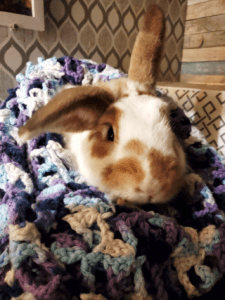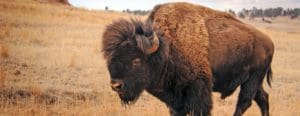
Madame Matilda here again. The weather is getting chilly and everyone wants to be warm and cozy! While not all have a luxurious coat like mine, there are many animals whose luscious locks make the wool for many people’s favorite snuggly sweater. Here are some of the more… unusual fiber animals:
Angora
 image courtesy https://ambikaboutique.bigcartel.com/product/english-angora-bunny |
 image courtesy https://www.lavenderblossoms.com/products/belangor-angora-yarn-100-hand-combed-french-angora-knitting-yarn-10-grams |
Species: Oryctolagus cuniculus domesticus, Angora rabbits
Origin: Ankara, Turkey. Popularized when brought to France in the 1700’s.
Fiber diameter: 13 micrometers (for comparison, human hair ranges from 17-121 micrometers)
Uses: sweaters, knitting, felting
Fun Fact: rabbit dander is distinct from that of cats or dogs, people who may be allergic to cats and dogs may not be as sensitive to rabbits.
Possum
 image courtesy https://www.doc.govt.nz/nature/pests-and-threats/animal-pests/possums/ |
 image courtesy https://www.heirloomweaversnz.com/-possum-knitting-wool.html |
Species: Triposurus vulpecula, Common Short Tail Possum
Origin: Native to Australia, wool is only made from the ones that are invasive to New Zealand
Fiber diameter: 15-18 micrometers
Uses: added to other wools (especially Merino sheep) to make the wool lighter weight
Fun Fact: Brushtail possums are an invasive species to New Zealand and damage the native brush and threaten at risk bird populations (like the Kiwi bird). In order to preserve the natural ecosystem, brushtail possums must be removed.
Qiviut
 image courtesy https://www.muskoxfarm.org/ |
 image courtesy https://www.muskoxfarm.org/product-page-cj5/100-qiviut-yarn-1-ounce-skeins |
Species: Ovibus moschatus, Alaska Musk Ox
Origin: Arctic circle, domesticated herds in Alaska
Fiber diameter: 18 micrometers
Uses: used for making (expensive) hats, scarfs, and sweaters. A high-quality sweater costs about $900.
Fun Fact: The Inuit word for musk ox is umingmak, translating to “the animal with skin like a beard”.
Bison
 image courtesy https://www.blackhillsbadlands.com/blog/patriarch-plains-once-near-extinction-american-bison-herds-have-rebounded-remain-joy-watch |
 image courtesy https://www.tribeyarns.com/products/100-bison-wool |
Species: Bison bison, American Bison
Origin: Plains of North America
Fiber diameter: 30 micrometers
Uses: weaving, knitting, and crochet
Fun Fact: While bison wool/down can be harvested directly from the animals during annual round ups, they also will collect wool that has been caught and left behind on fence posts and brush.
Cashmere
 image courtesy https://goats.extension.org/goat-breeds-cashmere/ |
 image courtesy https://www.fabulousyarn.com/jade/peeps/AYMC-V-GROUP/AYMC-V-GROUP1200.jpg |
Species: Capra aegagrus hircus, Cashmere goat
Origin: Kashmir region of the Himalayan Mountains
Fiber diameter: 19 micrometers
Uses: spun into wool for hats, scarves, sweaters, jackets, shawls, and more
Fun Fact: There are 13 breeds of Cashmere-producing goats: Australian cashmere, Changthangi/Pashmina cashmere, Hexi, Inner Mongolia cashmere, Liaoning cashmere, Licheng Daqing, Luliang black, Tibetan plateau, Wuzhumuqin, Zalaa Jinst white, and the Zhongwei cashmere.
There are so many varieties of wool out there! Stay warm and enjoy the sweater weather!
Sincerely,
Madame Matilda Munyon

About Us
Our exotic animal hospital is dedicated exclusively to the care of birds, exotic small mammals, reptiles, and even fish! We can offer everything your pet needs for a healthy and happy life, from wellness care and grooming to diagnostics and dentistry, but we can also provide emergency care during our opening hours, along with more specialized treatment for referred patients.
